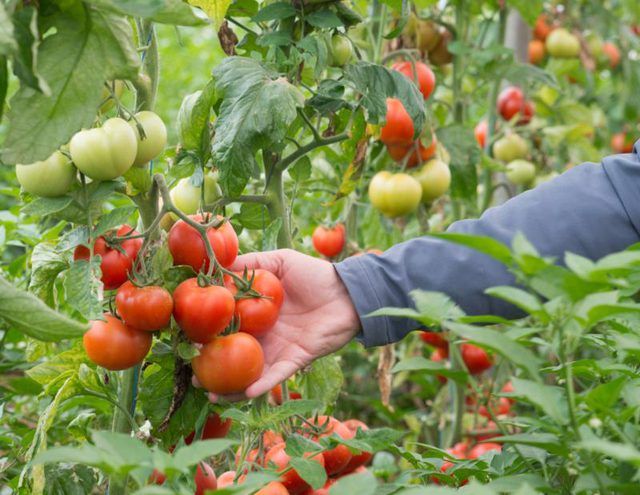Bulbs
Flower Basics
Flower Beds & Specialty Gardens
Flower Garden
Garden Furniture
Garden Gnomes
Garden Seeds
Garden Sheds
Garden Statues
Garden Tools & Supplies
Gardening Basics
Green & Organic
Groundcovers & Vines
Growing Annuals
Growing Basil
Growing Beans
Growing Berries
Growing Blueberries
Growing Cactus
Growing Corn
Growing Cotton
Growing Edibles
Growing Flowers
Growing Garlic
Growing Grapes
Growing Grass
Growing Herbs
Growing Jasmine
Growing Mint
Growing Mushrooms
Orchids
Growing Peanuts
Growing Perennials
Growing Plants
Growing Rosemary
Growing Roses
Growing Strawberries
Growing Sunflowers
Growing Thyme
Growing Tomatoes
Growing Tulips
Growing Vegetables
Herb Basics
Herb Garden
Indoor Growing
Landscaping Basics
Landscaping Patios
Landscaping Plants
Landscaping Shrubs
Landscaping Trees
Landscaping Walks & Pathways
Lawn Basics
Lawn Maintenance
Lawn Mowers
Lawn Ornaments
Lawn Planting
Lawn Tools
Outdoor Growing
Overall Landscape Planning
Pests, Weeds & Problems
Plant Basics
Rock Garden
Rose Garden
Shrubs
Soil
Specialty Gardens
Trees
Vegetable Garden
Yard Maintenance
When to Plant Tomatoes in Missouri
When to Plant Tomatoes in Missouri. Warm-season crops such as tomatoes (_Lycopersicon esculentum_) can be a bit finicky when it comes to temperature. While tomatoes are short-lived perennials in tropical climates, they are grown as annual plants throughout the U.S. The late spring snows and early autumn frosts often experienced in Missouri can...

Warm-season crops such as tomatoes (Lycopersicon esculentum) can be a bit finicky when it comes to temperature. While tomatoes are short-lived perennials in tropical climates, they are grown as annual plants throughout the U.S. The late spring snows and early autumn frosts often experienced in Missouri can leave many gardeners gambling on the best dates to start seeds and set out transplants. While there are no guarantees when it comes to weather, following a few standard guidelines can take a bit of the guesswork out of tomato gardening.
Check Up on Climate Data
A long history of record-keeping has provided farmers and gardeners alike with data on average frost dates and precipitation. The Missouri Climate Center at the University of Missouri-Columbia divides the state up based on latitudinal variation and elevation. On average, the last frost of spring for northern Missouri is April 20 and for central locations is April 10. Areas with higher elevations, such as the Ozark Plateau, tend to be cooler even though they are in the south, so tax day, April 15, is a good guideline. With these regional variations aside, most of Missouri has an average of 180 frost-free days in which to grow tomatoes. Choosing the right varieties, as well as a little pre-planning, will reap the biggest rewards.
Sow Seeds Indoors
Tomatoes are very sensitive to cold and will show damage at any temperatures below 50 degrees Fahrenheit. Since most varieties of tomatoes will produce fruit until the first frost, the sooner you can move plants into the garden, the more tomatoes you'll harvest.
For gardeners who like to sow their own seeds, start inside mid-March in a sunny window. Soil needs to be warm, at least 62 degrees F, and seeds will sprout within two weeks. Seedlings will be transplant-ready by the last week in April, but still a bit tender. Rather than put them out directly, try acclimating them over a period of a few days by putting them outside for a few hours and bringing them back in.
Transplanting Seedlings in the Garden
If you'd rather purchase seedlings from a garden center than wait for seeds, don't be tricked by size. The ideal height for a tomato seedling to transplant is around 8 inches, with a sturdy stem. Many places will sell much larger plants -- often at a higher cost -- but tomatoes of this size do not tend to transplant well and any extra growth will be lost as it adjusts to its new environment.
Seedlings bought from a garden center may not have been acclimated to Missouri's climate if they are fresh off a truck from a greenhouse, so consider putting them out for a few hours each day for several days before planting them in the ground the first week of May.
Choose the Right Variety
As America's most popular garden crop, tomatoes come in a wide variety of sizes, colors and cultivars. Heirloom varieties, those that have been cultivated for more than 50 years, have an old-fashioned taste, but typically take longer to mature -- often needing more than 80 days to flower, fruit and ripen.
Newer, hybrid varieties have been developed over the years to be both more resistant to diseases that cause blight and wilt as well as faster to ripen. The University of Missouri Extension recommends mid-sized hybrid cultivars such as "Celebrity" and "Better Boy," which can ripen within 75 days, and the smaller "Early Girl" variety, which ripens in less than 60 days. Cherry tomatoes and smaller varieties, such as "Supersweet 100s" take around 65 days.